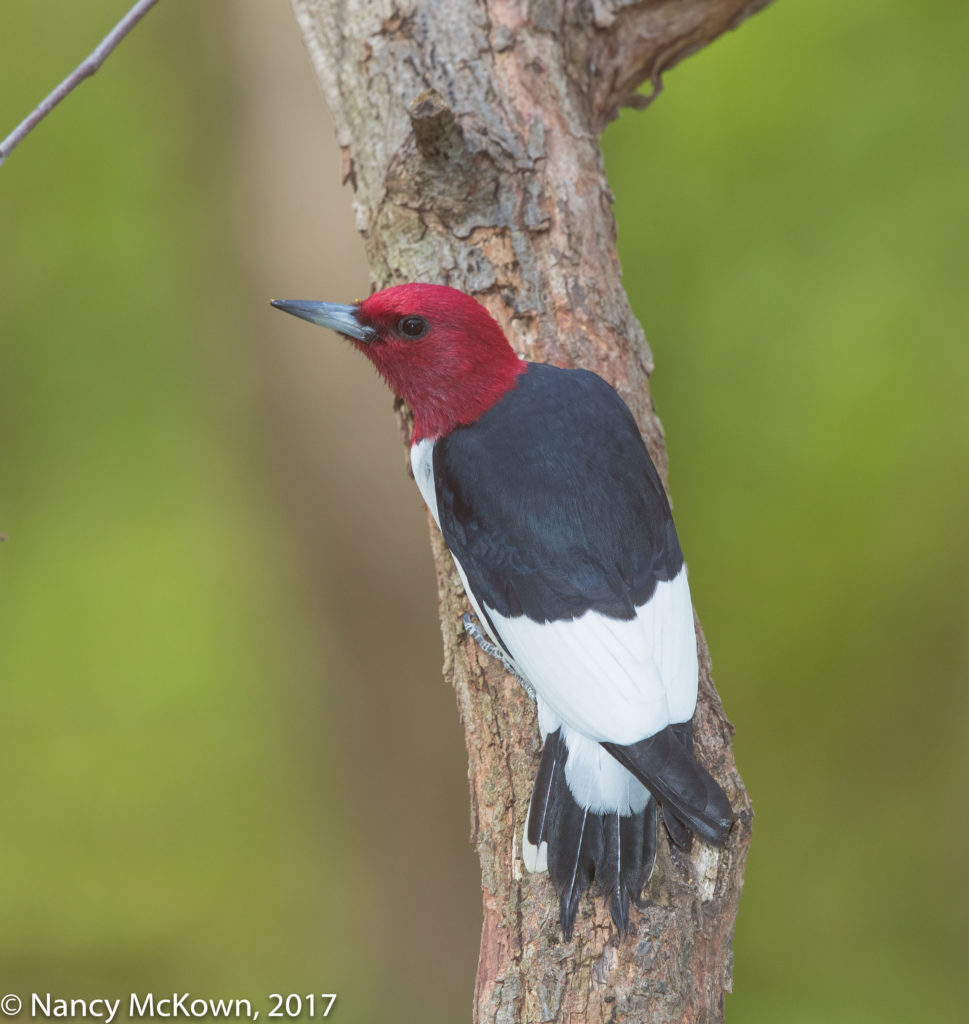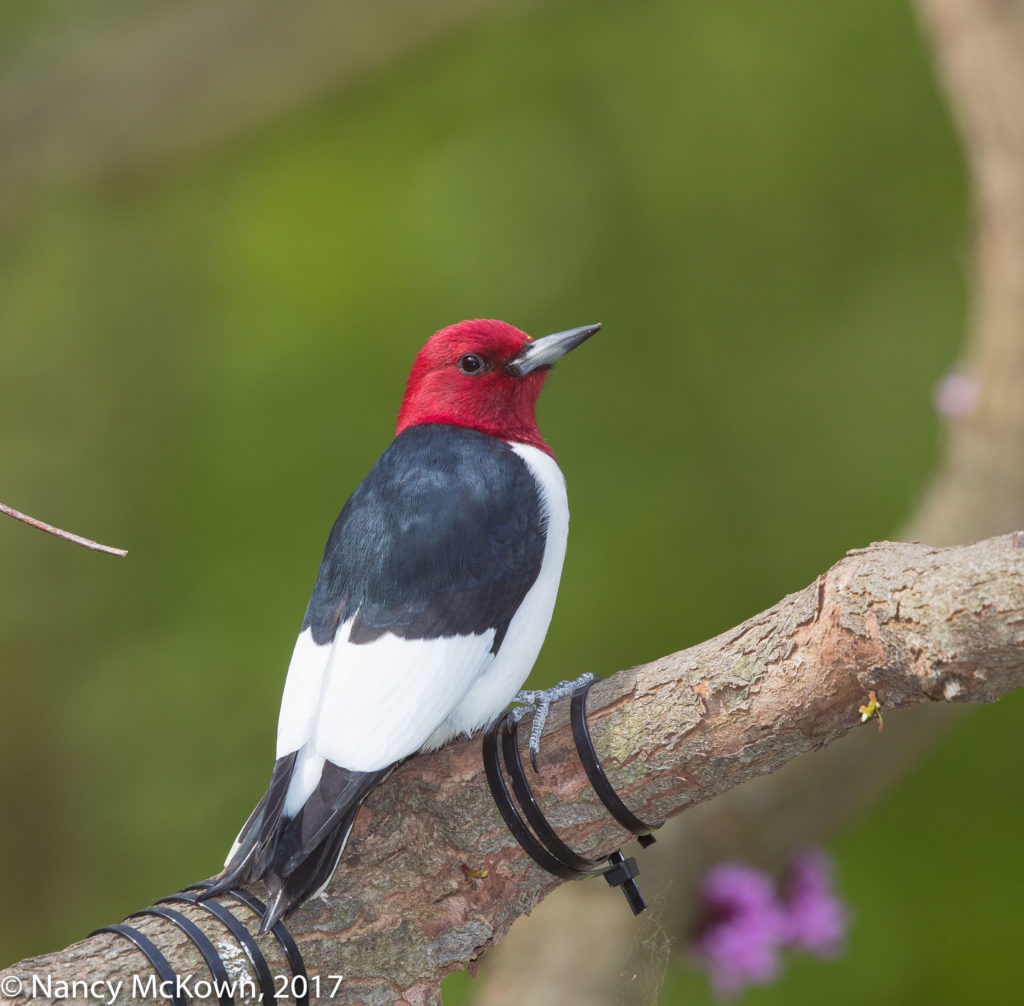Photographing a Red Headed Woodpecker
This year, a pair of Red Headed Woodpeckers has been visiting the yard (infrequently) to feast on suet and bully the other Woodpeckers who dare to cross their paths. Red Headed Woodpeckers are very skittish around humans and quick to pick a fight with other species of birds, especially other woodpeckers. They consume a wide variety of seeds, fruits, nuts and any insects they come across while foraging in trees. Unlike most of the year-round woodpecker residents in our yard, Red Headed Woodpeckers will head south in the Fall to escape the harsh Michigan winter.
A Haze in the Air
The air was unmoving and full of haze on the sunny morning I took these photos. Billions of tiny dust, smoke and other dry atmospheric particles (perhaps from a half a world away) put a veil over clarity. (NOTE: It’s harder to see these particles when the skies are overcast.)
A photo that is in-focus does not mean that it is tack sharp. And soft focusing does not mean that the photo is out-of-focus. Out-of-focus means that all the lines are blurred to some degree. In-focus means that the various shapes in the focus area are sharp to some degree.
I usually don’t notice the detrimental effects of haze in the air until I look back at the images in post processing. They just don’t look right because contrast and detail are less defined. Upon zooming in, the focus looks sharp, but there’s something obstructing the view. It appears worse when the subject is farther away.
Lightroom will allow you to selectively apply correction. I usually just use the clarity slider to brighten the overall image. Ultimately, it’s never enough because it is impossible for software to restore what was never captured.

Not as “Clear” as the 2nd Photo Below.
ISO400; f/9; 1/250 Second
Exploring High Speed Sync
I’m using fill flash more in the yard this summer. I try to be judicious as to how it is applied because, in general, the more ambient light, the more natural the image looks.
With that in mind, I embarked on a mission to better understand the High Speed Sync function (HSS) on my flash and how best to use it for bird photography. I had assumed that HSS would not only provide adequate fill light, but also freeze the action by allowing me to set whatever shutter speed I wished.
As with most things having to do with exposure, it’s more complicated than that.

The Red Bud Tree Branches
Cracked Last Winter.
Black Strips were Used to Bind the Wound.
ISO400; f/9; 1/250 Second
Normal Flash Mode
When using normal flash mode, exposure is calculated based on aperture, ISO, and the power and duration of the flash. The shutter speed does not fit into exposure analysis- except for how much ambient light is getting through during the time the shutter is open.
The calculated flash blast is very fast and very powerful. When ambient light is low, the flash blast will freeze motion more effectively than a faster shutter speed. (NOTE: It also depends on how fast your subject is moving.)
HSS – Continuous Light Mode
In HSS mode, the flash mimics continuous light and consequently shutter speed is part of the exposure calculation. HSS fires short pulses of light very fast during the whole time the shutter is open. The flash unit is working harder (sucking up to 4x more battery power) and putting out much less light in HSS mode.
With flash set to HSS mode, you do have the freedom to set a faster shutter speed. However, the higher you set the shutter speed, the less time the image sensor is exposed to light. Adequate illumination in HSS mode depends on how many fast short pulses of light can sneak through while the shutter is opened. (Of course, distance matters too.)
Normal Flash is Preferable in Bird Photography
Using the HSS function on a flash will not provide the speed, power and range needed for bird photography. Freezing motion in low light situations is better achieved when the flash is set to its normal flash mode.
Just shows how powerful and fast a single light beam generated from a flash gun can be.








